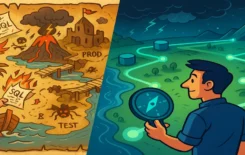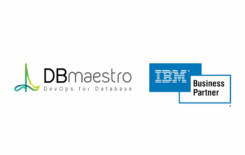I read this great article by Kevin Dunne and I just had to share the wisdom! Kevin traces the common frictions plaguing agile teams back to 5 basic developer personality types, and boy does hit the nail on it’s head.
In every team of developers, you will definitely come into contact with at least one of these people. In fact, you may even be one of these people! Without further ado, here are the five often challenging personalities that you will encounter in your DevOps teams:
1. The Cowboy
He’s the free-spirited creative type, who just cannot seem to work under the structure of modern development teams. He pushes off estimations, plans, meetings, and documentation and prefers to work “organically”, which can mess up planning and team-based deliverables.
What to do: Firstly, you express that Agile Manifesto values the right mix of process and controls as much as it values speed. Secondly, you can start to use test driven developments (TDD) or behavioral driven developments (BDD) to increase transparency, which imposes more structure and greater personal accountability.
2. The Tardy Teammate
She is the smartest coder you’ve got, but cannot seem to produce the results by the deadline. She’s great at coding, but not so great at organizational skills or focus.
What to do: You can —
- Require your team to produce demos of their work during the sprint cycle
- Partner her up with a fast developer and hope she learns some tricks
- Introduce project management tools that make tasks easier to track, organize, and complete, such as Jira Agile, which can also alert her if she’s falling behind schedule
- Offer positive reinforcement for delivering on time
- Alternatively, you can learn to live with it. Especially if you have adopted Continuous Deployment practices, where the team releases code as it is ready. That way, you can still release the majority of features on time, while not forcing the team to wait for those developers still in progress.
3. The Meeting Misser
The name pretty much covers it. This guy continuously misses standups, retrospectives, and other important team meet-ups, leading to gaps in his information.
What to do: In a well-oiled agile collaboration it’s not about bending team members to the will of management but about coming towards people wherever possible and finding solutions that work. With this in mind, you should make sure that all team meetings are actually necessary and that they can’t be handled instead by using collaboration tools or hallway meetings.

In general, status updates can be delivered through Agile ALM and project management tools and you can divide larger teams into smaller ones to encourage highly efficient casual collaboration.
When meetings are completely necessary, have an efficient meeting leader who sticks to the agenda, ensuring that no time is wasted.
4. The Silent Skeptic
He’s quiet, and comes across as disinterested and unapproachable. He’s either really shy and introverted or unhappy.
What to do: Reach out to him one-on-one because he may be uncomfortable to share his ideas to a group. Talking with him may also uncover other sticking points he’s having. Make sure louder teammates don’t drown out the voices of quieter ones.
Reward team performance so as to motivate participation and make sure that the collaborative requirements of Agile and DevOps adoption are clear. Of course, every carrot needs a stick, so also be clear about the ramifications for team members that refuse to get onboard.
5. The Metrics Manager
She’s the one who loves spreadsheets and organizations to the point that she often micromanages and sidetracks the team.
What to do: Try to tie her concerns to a particular business driver – such as product quality, user experience, or customer satisfaction, using well-defined Agile metrics (such as NPS for customer satisfaction) or bring in an outside voice, such as an Agile coach, who can show managers more modern benchmarks for development success.
Putting the Developer Personality Pieces Together
It should go without saying that people are infinitely complex creatures and developers in particular can be tricky books to read. No predefined solution can guarantee 100% buy-in or complete success. That said, these tips make for a pretty excellent starting point where it come to righting your course and steering your agile team to synergy.
Approached with some degree of nuance and due understanding, these tips are a good springboard to launch your diverse team of developer personality types into a happy, productive, and powerful agile force!






